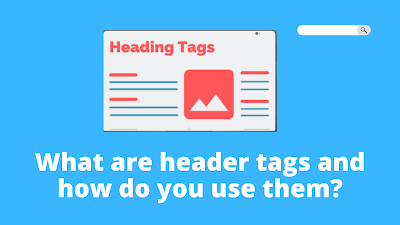What are header tags and how do you use them?
What are Header Tags?
Header tags are HTML elements used to designate headings and subheadings within the content of a webpage. They are represented by the <h1> to <h6> tags, with <h1> being the highest level of heading and <h6> the lowest. These tags not only visually distinguish different sections of your content but also communicate the hierarchical structure of your page to search engines and assistive technologies used by people with disabilities.
The Importance of Using Header Tags:
Improving Readability:
Header tags help break down your content into digestible sections, making it easier for readers to scan and understand the main points of your article or blog post.
Enhancing User Experience:
Properly organized content with descriptive headings enhances user experience by enabling visitors to find relevant information quickly and easily, reducing bounce rates, and increasing the time users spend on your website.
SEO Benefits:
Search engines use header tags to understand the context and relevance of your content. Properly utilized header tags can improve your search engine rankings for specific keywords and topics.
How to Use Header Tags:
Use Only One <h1> Tag:
The <h1> tag should represent the main title or headline of your page. It should be unique and descriptive, encapsulating the primary topic or focus of your content.
Utilize Hierarchy:
Follow a logical hierarchy with your header tags, using <h2> for main section headings, <h3> for subheadings within those sections, and so on. This hierarchical structure helps both readers and search engines understand the relationships between different sections of your content.
Be Descriptive:
Choose clear and descriptive text for your header tags. Not only does this benefit users in understanding the content, but it also aids search engines in indexing and ranking your pages accurately.
Maintain Consistency:
Consistency in using header tags throughout your website makes navigation more intuitive for users. It also helps search engines understand the standard structure of your site.
Avoid Skipping Levels:
Skipping header levels (e.g., going from <h2> to <h4> without using <h3>) can confuse both users and search engines. Stick to the proper hierarchical order to maintain clarity.
Balance Design and SEO:
While header tags are essential for SEO, avoid using them solely for styling purposes. Use CSS to control the visual appearance of your headings while maintaining the underlying HTML hierarchy.
Conclusion:



This article provides a clear and concise explanation of the importance of using header tags in web content, along with practical tips on how to use them effectively. The benefits of using header tags for improving readability, enhancing user experience, and gaining SEO advantages are well-articulated and supported. The emphasis on maintaining a logical hierarchy, being descriptive, and ensuring consistency throughout the website reflects a strong understanding of proper header tag usage. For more details please visit SEO company in Chennai
ReplyDelete